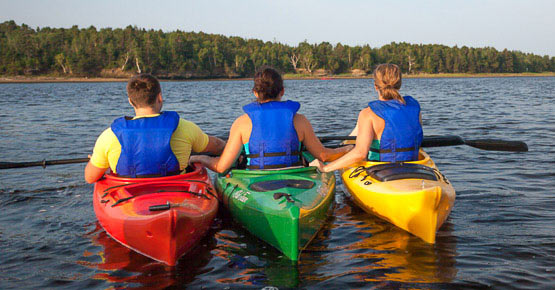
Water safety
Kouchibouguac National Park
Parks Canada reminds visitors that safety is a shared responsibility.
Visitors are responsible for learning about potential hazards when enjoying the parks waters, including its oceanfront, lagoons, and rivers, and making informed decisions based on their respective abilities. It is important to remember that the remote nature our site may extended delays in emergency responses.
Beaches
- Kellys Beach is not supervised by lifeguards.
- Swim with a buddy and supervise children when near the water
- Currents can be strong, even for an accomplished swimmer
- Always be aware of the current and avoid high-risk areas
- The park beaches are not tested for E. coli or other bacteria
- Water temperatures suitable for swimming are generally reached by June and continue through August
- Swimming during the spring and fall in cold water can increase the risk of hypothermia
- Be aware of hypothermia and how to treat it
Jellyfish
There are two main types of jellyfish that surface in our Kouchibouguac National Park waters: the Arctic Red (or Lion's Mane Jellyfish) and the White Moon Jellyfish. The Arctic Red is larger and more common than the White Moon, which is translucent and lacks the long red tentacles.
The tentacles of the Arctic Red Jellyfish are used to stun their prey (zooplankton) before feeding. These are the same tentacles that may give slight stinging or mild burning sensations when people come in contact with them. There is no need to panic, though; the remedy surrounds you at the ocean's edge! By rubbing wet sand over the irritated area, you can usually alleviate most of the discomfort caused by the sting of an Arctic Red Jellyfish.
Paddling

Kouchibouguac National Park's coastline and rivers are a dream to explore by canoe or kayak.
Ocean paddling requires knowledge of ocean currents, weather patterns and how to survive a storm.
River paddling requires an understanding of the power of the river and the ability to roll or survive a flip in very cold water.
- Always wear a life jacket
- Don’t drink or use drugs while boating or paddling
- Paddle within your abilities to avoid injury and exhaustion
Beach and river safety links
Here are a few security guidelines from the website AdventureSmart:
Related links
- Date modified :